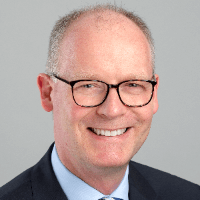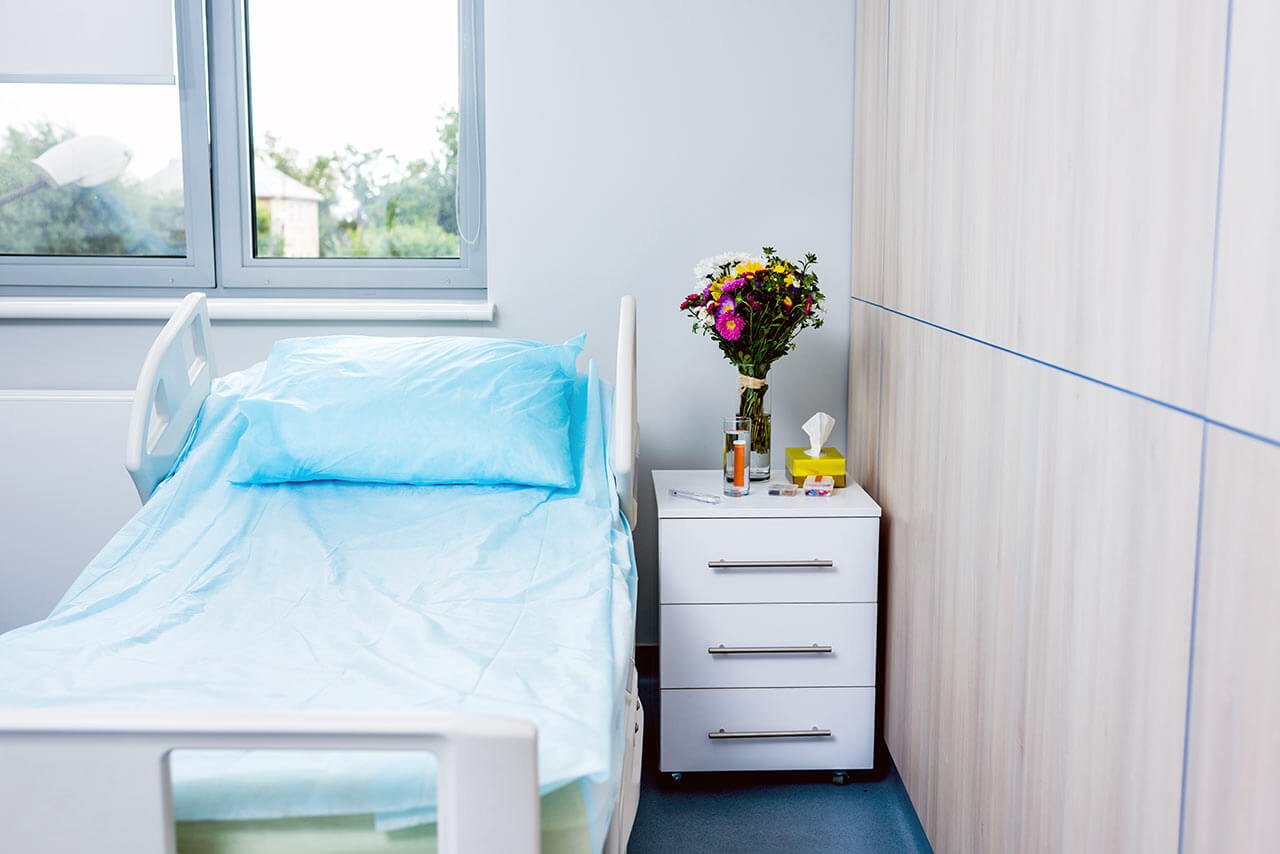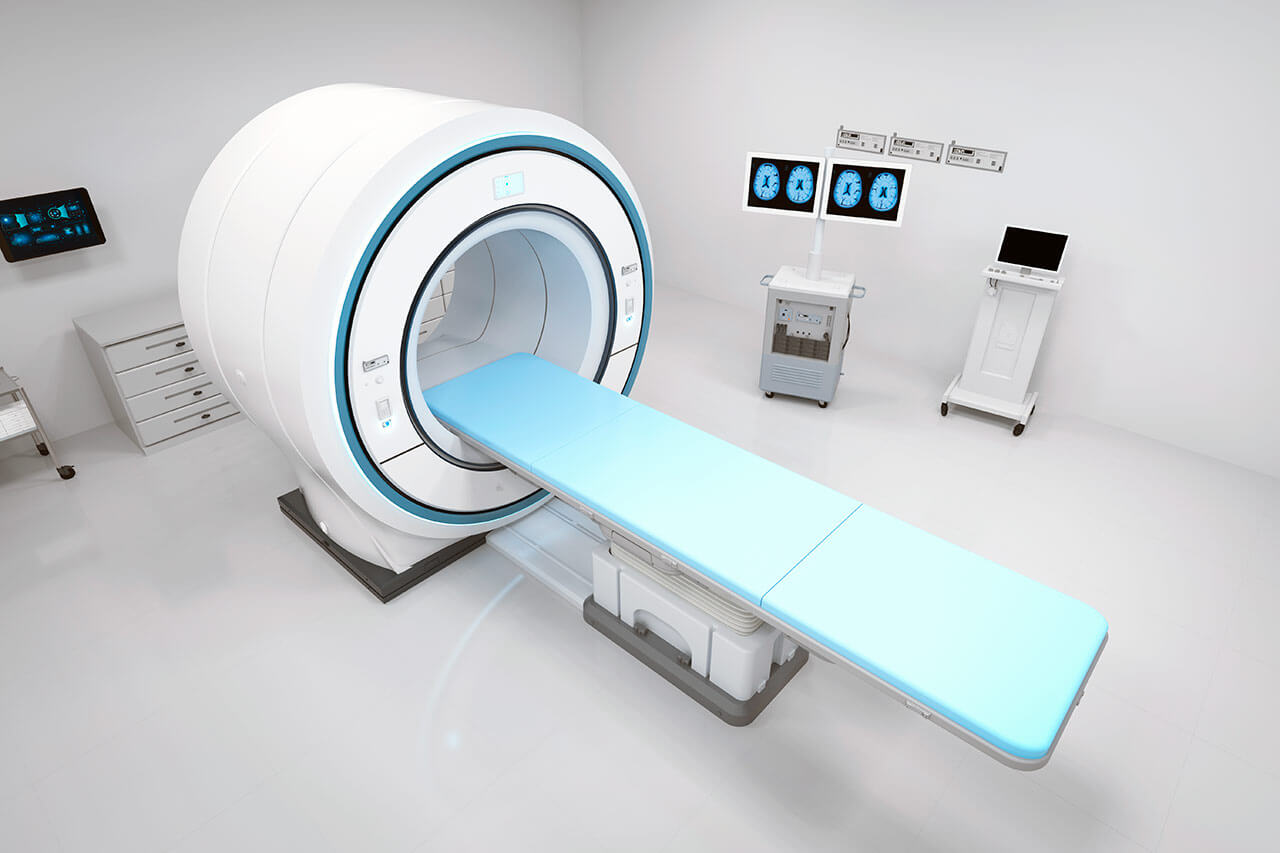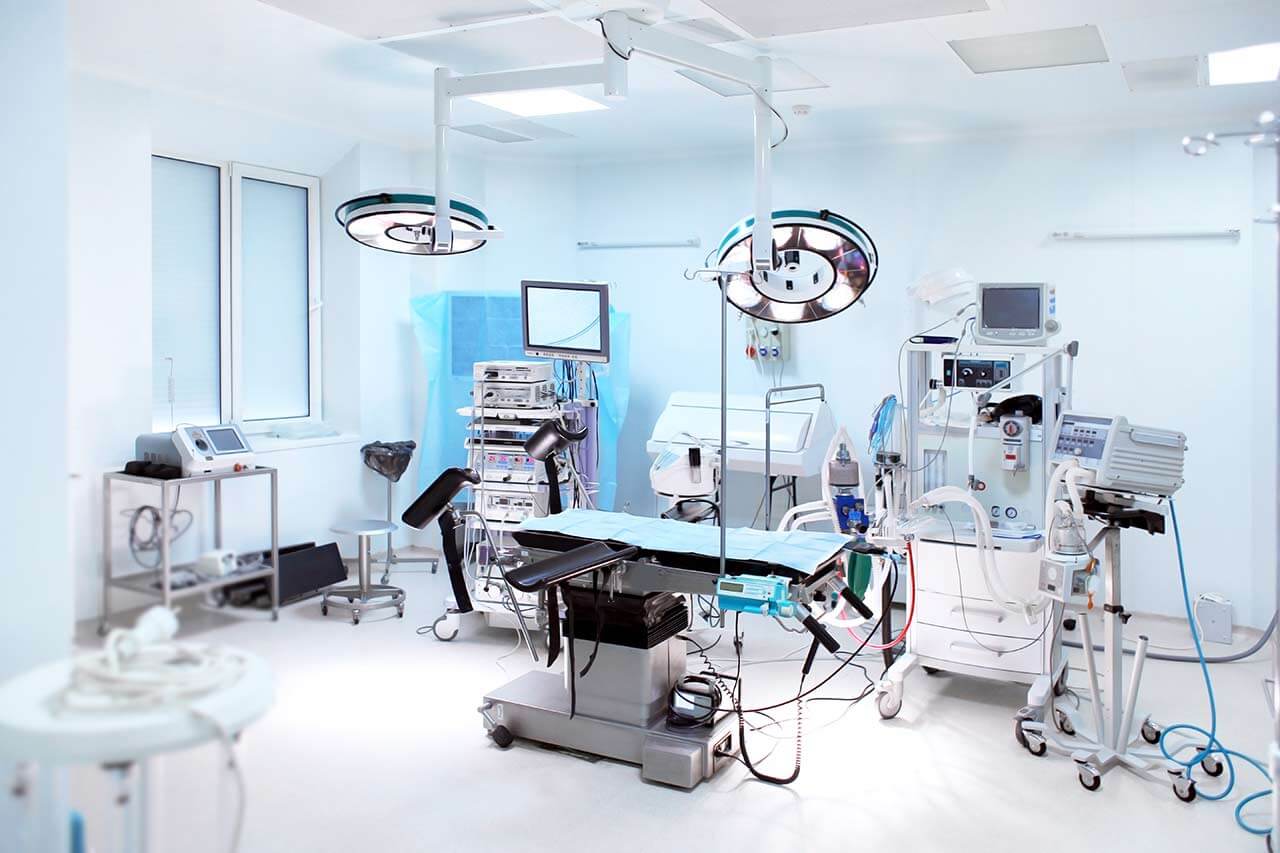
The program includes:
- Initial presentation in the clinic
- clinical history taking
- physical examination
- review of medical records
- laboratory tests:
- complete blood count
- general urine analysis
- biochemical analysis of blood
- indicators of inflammation (CRP, ESR)
- indicators of blood coagulation
- X-ray examination of the hip
- CT scan of the hip
- preoperative care
- endoprosthesis replacement
- symptomatic treatment
- control examinations
- physiotherapeutic procedures
- orthopedic appliances
- the cost of essential medicines and materials
- nursing services
- full hospital accommodation
- explanation of future recommendations
The program includes orthopedic rehabilitation:
- Primary presentation in the clinic
- medical history taking, including family history
- complex neurological and orthopedic examinations
- X-ray examination
- complex neurophysiological examinations
- individual rehabilitation program, which includes:
- Wii Fit training of balance
- neuropsychological therapy
- kinesiotherapy (physiotherapy)
- biocontrol with feedback
- healing deep muscle massage
- acupuncture in spasticity and pain syndromes
- occupational therapy
- psycho-educational classes
- individual physiotherapy
- microcurrent treatment
- fangotherapy / cryotherapy
- antispasmodic drug therapy
- hydrotherapy / massage therapy / reflexology
- training on special trainers
- and etc.
- nurses care
- stay in the hospital with full board
- symptomatic and drug therapy
How program is carried out
Preliminary preparation for surgery: quitting smoking and drinking alcohol 2 weeks before surgery; cancelling non-steroidal anti-inflammatory drugs (diclofenac, ibuprofen); cancelling anticoagulants (warfarin); normalization of body mass, if possible.
Preoperative examination, including consultation with an anesthesiologist and necessary related specialists. X-ray examination and MRI of the hip joint are performed. The examination takes 1-2 days.
Surgical hip endoprosthesis replacement. The operation is performed under general anesthesia and lasts for about 2 hours.
Postoperative care. During the first day after the intervention the patient stays in the intensive care unit, under round-the-clock medical supervision. After that, with a smooth course of the postoperative period, the patient is transferred to a regular ward and the drains are removed. The range of motion expands gradually, from light toes movements to walking. Walking with the use of walking aids is allowed in 3-5 days after the operation. Normal walking without the use of walking aids (crutches, cane) will become possible in 6-12 weeks.
Finally, the attending physician will evaluate the results of control examinations, schedule the date of discharge from the hospital and give you detailed recommendations for further follow-up and treatment.
Rehabilitation. The rehabilitation program begins after the transfer of the patient from the intensive care unit to a regular ward. It includes physical activity (from exercises in bed in the early days to exercises in the gym), physiotherapy, massage (including lymphatic drainage). After discharge from the hospital, the patient is transferred to a specialized rehabilitation clinic for 2 weeks, where he undergoes an advanced rehabilitation course.
Required documents
- X-ray examination of the hip joints
- MRI scan of the hip joints, if available
Service
You may also book:
 BookingHealth Price from:
BookingHealth Price from:
About the department
The Department of Adult and Pediatric Orthopedics, Orthopedic Surgery at the University Hospital Giessen UKGM offers all the diagnostic and therapeutic options for patients with musculoskeletal diseases. The main clinical tasks of the department include arthroscopic surgery, endoprosthetics, foot surgery, orthopedic rheumatology, sports orthopedics, orthopedic oncology, septic surgery, spinal surgery. The department’s specialists also have excellent qualifications and rich experience in the treatment of children with diseases of the orthopedic spectrum. The doctors of the department have at their disposal all modern conservative and surgical treatments that have proven their effectiveness at the international level. The department is headed by Prof. Dr. med. Markus Rickert.
In the field of joint replacement surgery, the department mainly specializes in hip, knee and shoulder endoprosthetic surgery. Depending on the age and anatomical features of the patient, cement and cementless prostheses can be used. Hip and knee operations are performed in accordance with the very latest recommendations, using sparing minimally invasive techniques.
The specialists in the field of spinal surgery conduct both conservative and surgical treatment of diseases of the cervical, thoracic and lumbar spine. To make an accurate diagnosis and select the optimal treatment tactics, the experts from the Departments of Radiology and Neurology can be often involved in the therapeutic process. A key focus in this field is the implementation of dorsoventral spinal fusion, vertebral prosthetics, nucleotomy, kyphoplasty and operations to treat herniated discs.
The department’s tasks also include the treatment of all primary and secondary benign and malignant tumors of bones and soft tissues. Each clinical case is examined at an interdisciplinary tumor board. To diagnose tumors, there are used studies, such as CT, MRI, PET-CT, etc. The treatment mostly includes neoadjuvant, adjuvant and surgical therapy. Should bones and soft tissues be resected, reconstructive interventions will be performed to eliminate the defects.
The department’s clinical focuses include:
- Arthroscopic surgery
- Knee arthroscopic surgery
- Arthroscopic meniscus surgery (partial resection, suturing, collagen meniscus implantation)
- Arthroscopic plastic surgery of the anterior and posterior cruciate ligament
- Arthroscopic plication of the medial collateral ligament
- Cartilage arthroscopic surgery: microfracturing, mosaic repair, cartilage cell transplantation (MACI), osteochondral fragment refixing
- Arthroscopic arthrofibrolysis
- Arthroscopic synovectomy
- Shoulder arthroscopic surgery
- Arthroscopic treatment of shoulder instability and articular lip lesions
- Arthroscopic expansion of the subacromial space using bursectomy
- Arthroscopic removal of calcification
- Arthroscopic resection of the acromioclavicular joint
- Arthroscopic reconstruction of the rotator cuff
- Ankle arthroscopic surgery
- Arthroscopic removal of the free articular body
- Arthroscopic treatment of impingement syndrome (decompression)
- Arthroscopic treatment of cartilage lesions (MACI, microfracturing, cartilage smoothing)
- Knee arthroscopic surgery
- Joint replacement surgery
- Hip replacement surgery
- Knee replacement surgery
- Shoulder replacement surgery
- Foot and ankle surgery
- Arthrodesis
- Joint replacement surgery
- Corrective osteotomy
- Fracture treatment
- Joint and tendon synovectomy
- Tendon reconstruction
- Pediatric orthopedics
- Foot deformities
- Clubfoot
- Flat feet
- Heel foot
- Hollow foot
- Hip diseases
- Femoral head displacement
- Hip dysplasia
- Perthes disease
- Hip dislocation
- Inflammatory hip diseases (for example, bacterial coxitis)
- Knee diseases
- Traumatic ligament rupture and cartilage lesion
- Osteochondritis dissecans
- Neuro-orthopedic diseases
- Cerebral palsy
- Spina bifida
- Muscular dystrophy
- Spinal diseases
- Scoliosis
- Adolescent kyphosis
- Limb deformities
- Axial deformities
- Limb length discrepancy
- Rotational deformities
- Foot deformities
- Orthopedic rheumatology
- Synovectomy
- Joint interventions
- Spinal interventions
- Sports orthopedics (conservative and surgical treatment of acute and chronic sports injuries of the tendons, muscles and joints)
- Septic surgery and revision endoprosthetics
- Orthopedic oncology (treatment of primary and secondary bone and soft tissue tumors)
- Spinal surgery
- Dorsoventral spinal fusion
- Vertebral prosthetics
- Nucleotomy
- Kyphoplasty
- Intervertebral hernia repair
- Other medical services
Curriculum vitae
- 1988 - 1995 Study of Human Medicine, University of Essen.
- 1995 - 1997 Assistant Physician, Sports Clinic in Stuttgart (Sportklinik Stuttgart).
- 1997 - 2005 Assistant Physician, Department of Orthopedics, University Hospital Heidelberg.
- 1997 Doctoral thesis defense. Subject: "Resistance to natural tendon rupture of the sternocleidomastoid muscle in humans – a biomechanical study".
- 2005 - 2007 Senior Physician, Department of Orthopedics, University Hospital Heidelberg.
- 2006 Habilitation. Subject: "On the influence of growth factor and differentiation-5 (GDF-5) on the healing of the Achilles tendon in the context of tissue engineering of tendons and ligaments".
- 2007 - 2010 Leading Senior Physician, Department of Orthopedics, University Hospital Heidelberg.
- Since 2010 Head of the Department of Adult and Pediatric Orthopedics, Orthopedic Surgery at the University Hospital Giessen UKGM.
Qualifications
- Medical Specialist in Orthopedics and Trauma Surgery.
- Additional specialization in Special Orthopedic Surgery.
- Additional specialization in Pediatric Orthopedics.
Clinical Focuses
- Knee and hip replacement surgery, including revision surgery.
- Partial knee replacement surgery (Oxford sliding prosthesis).
- Shoulder surgery, including arthroplasty.
Research Focuses
- Biomechanical properties and stimulation of healing in case of tendon injuries.
- Biomechanics and functionality of orthopedic implants.
Memberships in Professional Societies
- German Society of Orthopedics and Orthopedic Surgery (DGOOC).
- DGOOC Basic Research Section.
- German Association of Shoulder and Elbow Surgery (DVSE).
- European Society for Surgery of the Shoulder and the Elbow (SECEC).
Photo of the doctor: (c) UKGM - Universitätsklinikum Gießen und Marburg GmbH
About hospital
The University Hospital Giessen UKGM positions itself as an ultramodern medical facility with outstanding quality of medical care. The hospital presents almost all areas of medicine, ranging from ophthalmology to traumatology and dentistry. The priorities of the hospital’s activities include surgery, neurosurgery, oncology, nephrology with kidney transplantation and pediatric medicine.
The hospital is the third largest in Germany. Every year, more than 436,000 patients are treated in two locations of the hospital (Giessen and Marburg): 342,000 outpatients and 94,000 inpatients. The medical facility is the first privatized university hospital in the country.
The hospital staff is engaged not only in clinical practice, but also in research activities on the basis of the Faculty of Medicine at Justus Liebig University Giessen and Philipps University of Marburg, which contributes to a significant contribution to the development of modern medicine. During the many years of productive work on the development of new diagnostic and treatment methods, the hospital’s doctors managed to make many significant discoveries.
The hospital enjoys an excellent reputation in Germany and far beyond its borders. It managed to gain such credibility thanks to the high competence of doctors, advanced equipment, high-quality medical service and care.
Photo: (c) depositphotos
Accommodation in hospital
Patients rooms
The patients of the University Hospital Giessen UKGM live in comfortable rooms made in a modern design and light colors. Each room has an ensuite bathroom with shower and toilet. The standard room furnishing includes an automatically adjustable bed, a bedside table, a wardrobe, a table and chairs for receiving visitors, a TV, a telephone.
Meals and Menus
The patients of the hospital are offered balanced, healthy three meals a day: buffet breakfast, lunch and dinner. The private kitchen, certified according to DIN EN ISO 9001:2000, is responsible for providing patients with food and drinks.
If for some reason you do not eat all foods, you will be offered an individual menu. The hospital also has a cafeteria with a large assortment of hot and cold drinks, snacks and desserts.
Further details
Standard rooms include:
Television
All patient rooms are equipped with TV sets. If you have some questions, please contact medical personnel.
Religion
Religious services can be provided upon request.
Accompanying person
During an inpatient program, an accompanying person can stay with you in a patient room or in a hotel of your choice.
Hotel
During the outpatient program, you can stay at the hotel of your choice. Our managers will help you to choose the most suitable option.




